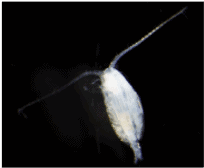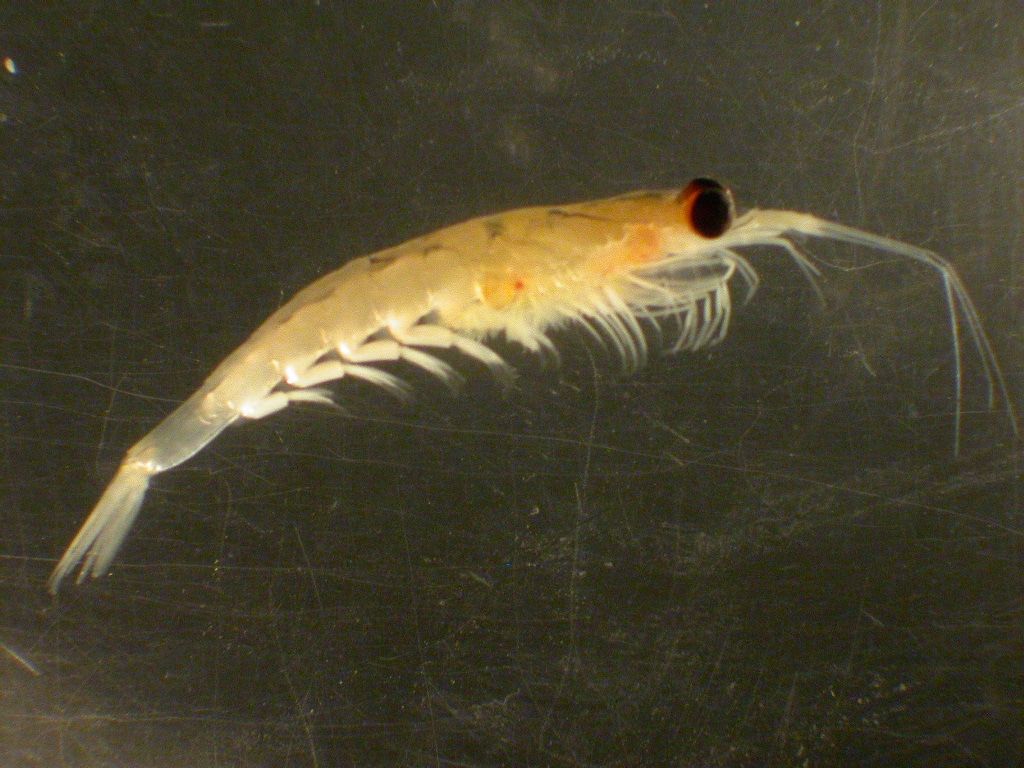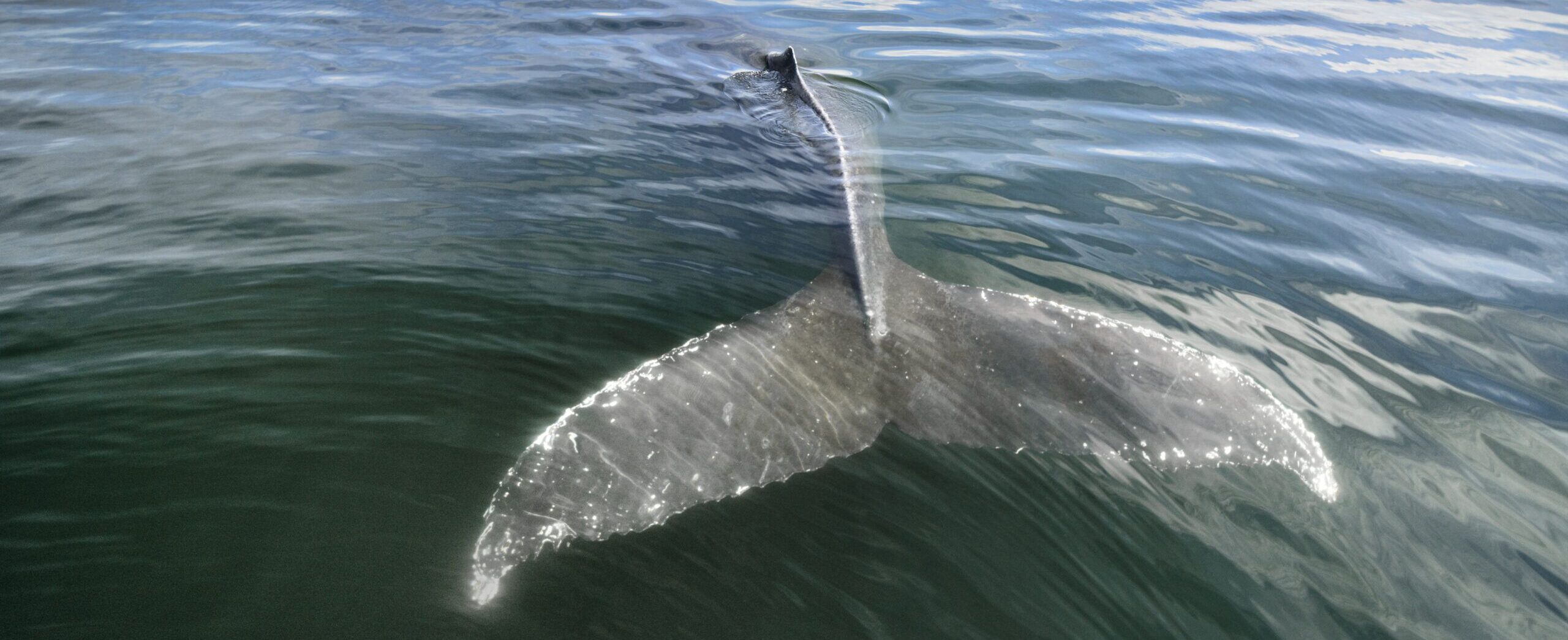Zooplankton in the Strait
Zooplankton are the critical food web link between microscopic plants (primary producers or phytoplankton) and juvenile fish. Although there are hundreds of different species of zooplankton, these can be organized into a smaller number of groups containing similar species.
The large crustacean groups presented here are considered the preferred diet for juvenile salmon in the Strait of Georgia. Note that making quantitative estimates of zooplankton is difficult, so that biomasses associated with individual samples can vary greatly. However, in general, summer biomass is significantly greater than winter biomass, and there appears to be little spatial variation once the data has been averaged over time.

Copepods
Copepods of all sizes typically make up more than 40% of the zooplankton biomass (the smaller copepods are actually the most abundant in terms of number). The large omnivorous Neocalanus plumchrus (3-5 mm in length) are typically dominant in spring, when they migrate to the surface to feed and spawn. The rest of the year they remain dormant at great depths. Some of the other (mostly smaller) copepods are present all summer but undergo daily vertical migrations (like Metridia spp.), rising to the surface at night to feed and but sinking to depths at night to avoid being eaten themselves. Others spend their whole lifetime near the surface.

Decapods
The biomass of decapods (primarily shrimp and crab larvae), which range in size from about 4 mm to 1 cm or so in length, also tends to increase in spring, while the biomass of carnivorous amphipods tends to increase in summer. The omnivorous euphausiids (1 cm or larger) are less tied to a seasonal signal; they are also quite good at trying to escape nets as they are towed through the water so estimating their numbers is more difficult. These groups make up about another 35% of the zooplankton biomass.

Our Methods
The zooplankton in our dataset are all captured by vertically towing a conical net, which is usually mounted in a metal ring of diameter about half a metre. The net itself has a mesh size of 250μm. It is small enough to capture most zooplankton but large enough to let water flow through and allow most phytoplankton to escape. The contents of the net are then gently washed into a sample jar (as seen above) and preserved by adding a small quantity of formalin.
These samples are then examined under a microscope by a zooplankton taxonomist. The taxonomist counts the number of each species in each sample. Once the counts are transformed into ocean abundances, they are converted into biomasses by using a representative “dry weight” for each species and life stage.
In our figures, we use zooplankton data from the most recent decade available in a Fisheries and Oceans Canada database. Samples are obtained from a variety of different programs of which the CSOP is only a small contributor.
The frequency of sampling has been much higher since 2015.
Our Data
The Citizen Science Oceanography Program team has worked on processing their data to answer a number of research questions. They have produced seasonal maps of zooplankton abundance and they have plotted the concentrations of copepods, amphipods, and euphausiids as a time series at each location, for all years of sampling.
Using these long-term zooplankton biomass data, along with multi-year phytoplankton biomass estimates, they constructed three food web models for the plankton community in the Strait of Georgia using Ecopath. Each model provides a steady-state, but seasonally-varying, mass balance in one of three seasons in the Strait of Georgia: spring, summer, and winter.
Click here to learn more about zooplankton, their methodology, and to acces the figures. Click here to access the data.
References
The small amount of zooplankton data collected by the CSOP is amalgamated with the IOS Zooplankton Database (version 9) maintained by the Plankton Ecology group at the Institute of Ocean Sciences, Fisheries and Oceans Canada. A version of this database, split into major taxa, is available under conditions of the Open Government Licence – Canada here. More information about the database and contact information is available there.

